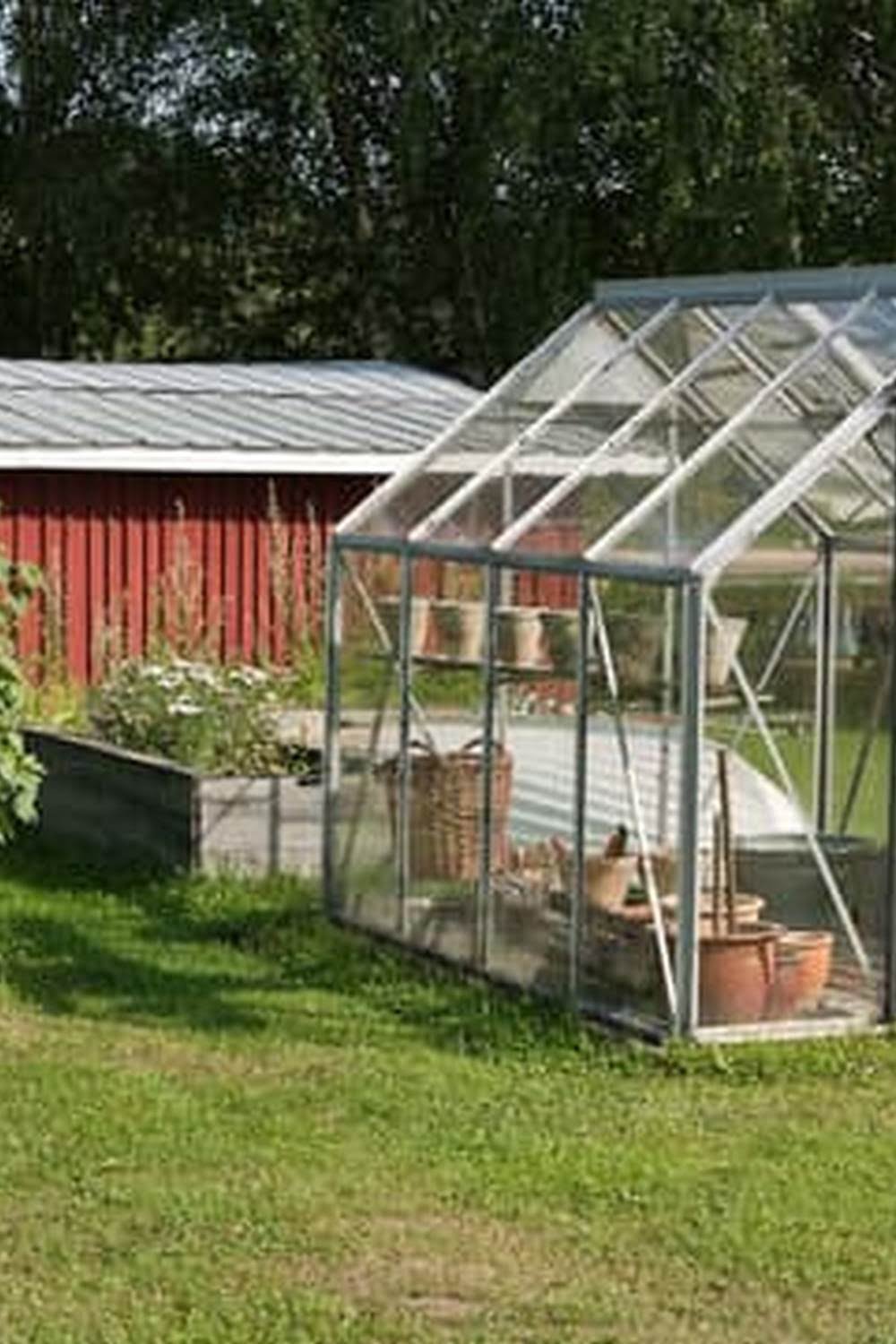Lasagna Method Filling A Raised Vegetable Garden Bed
If you’re looking to fill a raised vegetable garden bed with rich, dark soil, the lasagna method is a great way to do it. This method of filling a raised bed garden is simple: you layer soil, compost, and organic matter in the bed in alternating layers, much like you would make a lasagna. The lasagna method is a great way to add organic matter to your soil, and it’s also a great way to recycle organic matter that would otherwise go to waste.
To get started, you’ll need some soil, compost, and organic matter. You can either use your own compost or buy compost from a local garden center. You’ll also need some organic matter to recycle. This could be anything from old leaves and branches to kitchen scraps and lawn clippings.
The first step is to create a base layer of soil in the raised garden bed. You’ll want to make this layer at least six inches deep. Add a layer of compost on top of the soil, and then add a layer of organic matter. You can either add this in the form of chopped leaves, or you can add it in the form of composted manure. Continue to layer soil, compost, and organic matter in this way, making sure to end with a layer of soil.
If you’re using your own compost, you’ll want to make sure that it’s well-composted. Fresh compost can be too hot for vegetables and can damage their roots. Compost that’s been composted for at least six months will be the perfect temperature for vegetables.
Once you’ve filled the raised garden bed with the lasagna method, it’s time to plant your vegetables. Be sure to add a layer of mulch on top of the bed to help keep the soil moist and to prevent weeds from growing.
Raised Vegetable Garden Planter Cover
If you are anything like me, you are always looking for ways to make your life a little bit easier. And if you are like me, you also love spending time in your garden. So what could be better than combining the two? With a raised vegetable garden planter cover, you can have the best of both worlds!
A raised vegetable garden planter cover is a great way to keep your plants warm in the winter and cool in the summer. It also helps to protect them from the wind and rain. And it can be custom-made to fit any size or shape of raised garden bed.
There are several different materials that you can use to make a raised vegetable garden planter cover. Plastic is a popular option, because it is easy to clean and it is durable. But if you are looking for a more environmentally-friendly option, you can also use fabric or recycled materials.
No matter what material you choose, make sure that it is waterproof and has good ventilation. This will help to keep your plants healthy and thriving.
A raised vegetable garden planter cover is a great way to extend the growing season for your plants. It can also help to protect them from pests and diseases. And it is a great way to keep your garden looking neat and tidy.
So if you are looking for a way to make your garden easier to manage, a raised vegetable garden planter cover is a great option!
Planting Guide Raised Vegetable Garden
There are a lot of factors to consider when planting a raised vegetable garden. The first decision you need to make is what kind of vegetables you’d like to grow. Do some research on what grows best in your area and what will be in season when you want to plant your garden.
Once you’ve decided on your vegetables, you need to pick the right spot for your garden. The spot should get plenty of sun and have good drainage. If you’re not sure if your spot has good drainage, try digging a hole and filling it with water. If the water drains within an hour, the spot has good drainage. If the water doesn’t drain within an hour, you’ll need to find a spot with better drainage.
Once you’ve picked the spot for your garden, it’s time to start digging. You’ll want to dig the garden to the same depth as the soil in your yard. This will help ensure that the vegetables have enough soil to grow in.
Next, you’ll need to add some compost to the soil. Compost helps improve the soil’s quality and helps the vegetables grow bigger and healthier. You can either buy compost or make your own. To make your own compost, you’ll need to gather leaves, grass clippings, vegetable peels and any other organic matter you can find. Then, you’ll need to mix the organic matter with water and let it sit for a few weeks.
Once the compost is ready, you can add it to your garden. Add about 2-3 inches of compost to the soil and mix it in. Then, it’s time to plant your vegetables.
When planting your vegetables, be sure to follow the instructions on the seed packet. Each type of vegetable has different needs, so it’s important to read the instructions.
When planting, be sure to leave enough space between each vegetable. This will help the vegetables grow bigger and healthier.
Once your garden is planted, be sure to water it regularly. The vegetables need at least an inch of water per week to grow properly.
If you follow these steps, you’ll be able to plant a successful raised vegetable garden.
Raised Beds Vegetable Garden Design
When most people think of vegetable gardening, they think of planting their vegetables in the ground. But what if you don’t have enough room in your yard for a garden? Or what if the ground is too wet or too shady?
One solution is to use raised beds. Raised beds are beds that are raised above the ground, either on legs or on a frame. This allows you to garden in a small space, even if the ground is wet or shady. It also makes it easier to work the soil, since you can get down to it without having to bend over.
There are many different ways to design a raised bed vegetable garden. Here are a few tips:
1. Decide on the shape of your garden. Raised beds can be square, rectangular, or any other shape you like.
2. Decide on the size of your garden. The size of your garden will depend on the size of your yard and the amount of vegetables you want to grow.
3. Decide on the height of your raised beds. The height of your raised beds will depend on the type of vegetables you are growing. Root vegetables, such as carrots and potatoes, do well in raised beds that are 12-18 inches high. Leafy vegetables, such as lettuce and spinach, do well in raised beds that are 6-12 inches high.
4. Decide on the type of materials you want to use to build your raised beds. Some people use wood, while others use stones or bricks.
5. Decide on the type of soil you want to use in your raised beds. You can use regular soil, or you can buy soil that is specifically made for raised beds.
Once you have decided on the shape, size, and height of your raised bed vegetable garden, it’s time to start building!
Making A Raised Vegetable Garden In North Texas
So, you want to know how to make a raised vegetable garden in North Texas? It’s not as hard as you might think, but there are a few things you need to know first.
The first thing you need to consider is the climate. North Texas is a hot, dry climate, and vegetable gardens need a lot of water. If you live in an area that doesn’t get a lot of rain, you’ll need to be prepared to water your garden regularly.
The second thing you need to consider is the type of soil you have. North Texas has very poor soil, so you’ll need to add some organic matter to the soil to improve its quality. You can do this by adding compost, manure, or peat moss to the soil.
Once you’ve taken these things into consideration, it’s time to start building your garden. The easiest way to do this is to use a raised bed. A raised bed is a box made of wood, metal, or plastic that is filled with soil. This is a great way to garden in North Texas, because it prevents the soil from becoming too hot and it helps to retain moisture.
To make a raised bed, you’ll need to first decide how big you want it to be. The standard size for a raised bed is 4×8 feet, but you can make it any size you want. Once you’ve decided on a size, you’ll need to build the frame. The frame can be made out of wood, metal, or plastic, and it should be about 12 inches high.
Once the frame is built, you can start filling it with soil. Be sure to add plenty of organic matter to the soil to improve its quality. You can also add compost, manure, or peat moss to the soil to help it retain moisture.
Once the bed is filled with soil, you can start planting your vegetables. Be sure to choose vegetables that are suited to the climate and the type of soil you have. North Texas is a hot, dry climate, so you’ll want to choose vegetables that are drought-resistant.
Some vegetables that are suited to the climate and the soil in North Texas are tomatoes, cucumbers, bell peppers, squash, and eggplant. These vegetables can be grown in raised beds, and they will produce a lot of fruit in a short amount of time.
If you’re not sure which vegetables to plant in your garden, you can find a list of vegetables that are suited to the climate and the soil in North Texas online. There are also plenty of gardening books available that will provide you with information on how to grow vegetables in North Texas.

If you’re looking to get into vegetable gardening, or are just looking for some tips on how to make your current garden better, then you’ve come to the right place! My name is Ethel and I have been gardening for years. In this blog, I’m going to share with you some of my best tips on how to create a successful vegetable garden.





